Helping students develop an understanding of fractions on a number line, is not an easy task. That’s exactly why I like to infuse some hands-on activities + fraction fun into our lessons 😁
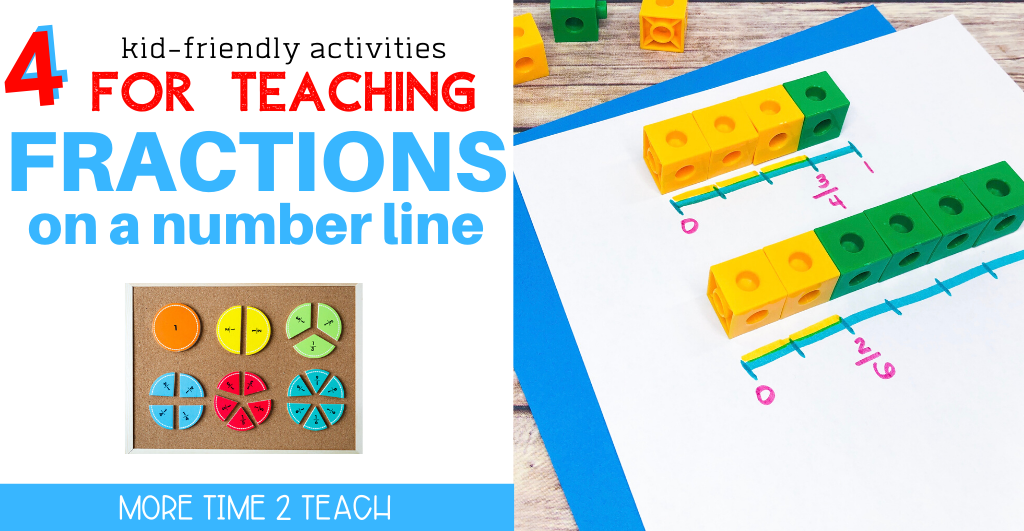
According to the Common Core Standards, 3rd graders must “develop an understanding of fractions as numbers.” They must also understand a fraction as a number on a number line, and be able to represent fractions on a number line diagram.
Students that do not develop a solid foundation on fractions will struggle with measurement. Especially, when measuring to the nearest inch or quarter-inch with a ruler.
Before introducing kids to fractions on a number line, I like to expose them to fraction bars. This helps them transition to fractions on a number line + allows them to “see” and understand that fractions are part of a whole.

A fraction is NOT simply one number written “on top” of another!
So let’s get started with 4 kid-friendly activities that are sure to help your kiddos understand fractions on a number line.
Fractions on a Number Line: Using Snap Cubes

Materials:
- snap cubes- 20 total in 2 different colors
- paper
- pencil
Activity:
Model a fraction.

Next, represent the model on a number line by adding tick marks after each cube.

Then starting at zero, have them count the number of “parts” in the whole 1, 2, 3, 4, 5, 6, 7, 8. There are 8 parts to the whole. In other words, the stick of cubes is broken into eighths. {Remind students that the denominator represents the number of parts that make up the whole.} Practice counting the cubes 1/8, 2/8, 3/8, 4/8, 5/8, 6/8, 7/8, 8/8.
Now count the number of green cubes 1, 2, 3, 4. There are 4 green cubes. Emphasize that you are counting the number of “parts” and NOT the ticks.

Finally, have them label the point on the line that represents the fraction of the bar that is green. This is also a great opportunity to point out that 4/8 really means {4 out of 8 cubes are green.}

Using Graph Paper
Materials:
- two cm. graph paper – {free download}
- paper
- pencil
Activity:
Give students a fraction such as 2/4. Ask them how many parts make up the whole. {If they don’t know, give them snap cubes and have them make a model.}

Then draw a line that extends the length of 4 squares. {The denominator shows the number of parts in a whole.} Label the beginning 0 and the end 1 for 1 whole.
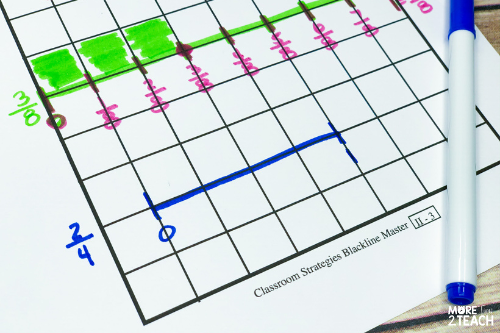
Next, add tick marks along the number line and label with the fractions 1/4, 2/4, 3/4, 4/4 = 1 whole.

Finally, shade in 2 out of 4 squares or the number of parts demonstrated by the numerator.
Using Pipe Cleaners + Beads

Materials:
- Pony beads or similar beads (at least 2 colors)
- pipe cleaner
- paper
- pencil
Activity:
Give students a sheet of paper, pipe cleaner and some beads. Have them draw a number line with 0 and 1 marking the beginning and end points. Next, grab 2 colored beads to represent those points.

Use some beads to divide the pipe cleaner into 5 parts. Give your kiddos some time to explore + even struggle! The goal is for them to realize that the number of beads and the number of parts are NOT the same.

As a matter of fact, you will need 4 beads to partition {or divide} the pipe cleaner into 5 parts. Remember, you are counting the number of parts the line is divided into, NOT the number of ticks (beads).
Understanding fractions on a number line is all about recognizing the importance of the parts on the line and NOT the tick marks!

Next, draw tick marks on the number line.
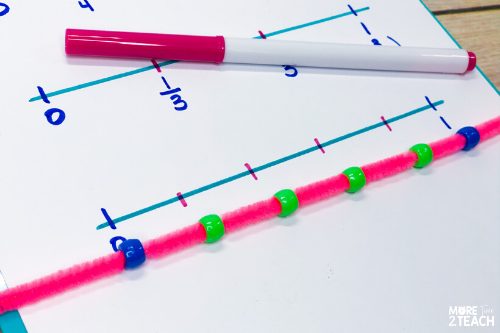
Label the number line… Discuss that the denominator represents the number of parts in the whole {The pipe cleaner is divided into 5 parts or fifths.} Label each “part” with a fraction of the whole… 1/5, 2/5, 3/5, 4/5, and 5/5 = 1 whole.

Fractions on a Number Line: Using Markers

Materials:
- colored markers
- fractions on a number line worksheet
Activity:
You can use fractions on a number line worksheet for this activity. Just remember to add a point somewhere on the line.

Next, color in each part of the line by alternating colors. This makes it easier to identify the number of parts. Label the beginning 0 and the end 1.

Count the number of parts in the whole…1, 2, 3, 4, 5, 6. There are 6 parts in the whole. The first part is 1 out of 6, label it 1/6. Continue labeling the fractions on the number line.
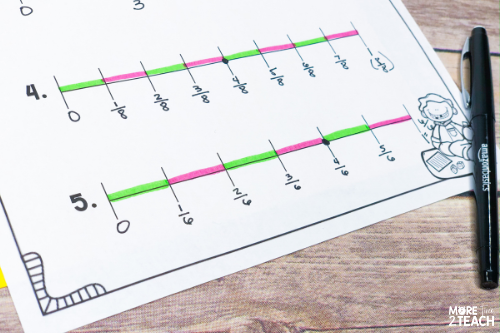
Finally, review that the point on the number line actually represents the number of parts starting from 0 all the way to the point. Because that distance consists of 4 parts, it represents 4/6 of the line.

I hope this post has given you a few ideas to make learning about fractions on a number line fun! In case you’re wondering which standards are covered in these activities, here you go:
3.NF.1. Understand a fraction 1/b as the quantity formed by 1 part when a whole is partitioned into b equal parts; understand a fraction a/b as the quantity formed by a parts of size 1/b
3.NF.2 Understand a fraction as a number on a number line; represent fractions on a number line diagram
I’d love to hear YOUR tips and tricks! Please share them with me via email at moretime2teach@gmail.com or tag me on social media with #moretime2teach
Love,

WANT TO REMEMBER THIS? SAVE 4 WAYS TO TEACH FRACTIONS ON A NUMBER LINE TO YOUR FAVORITE PINTEREST BOARD





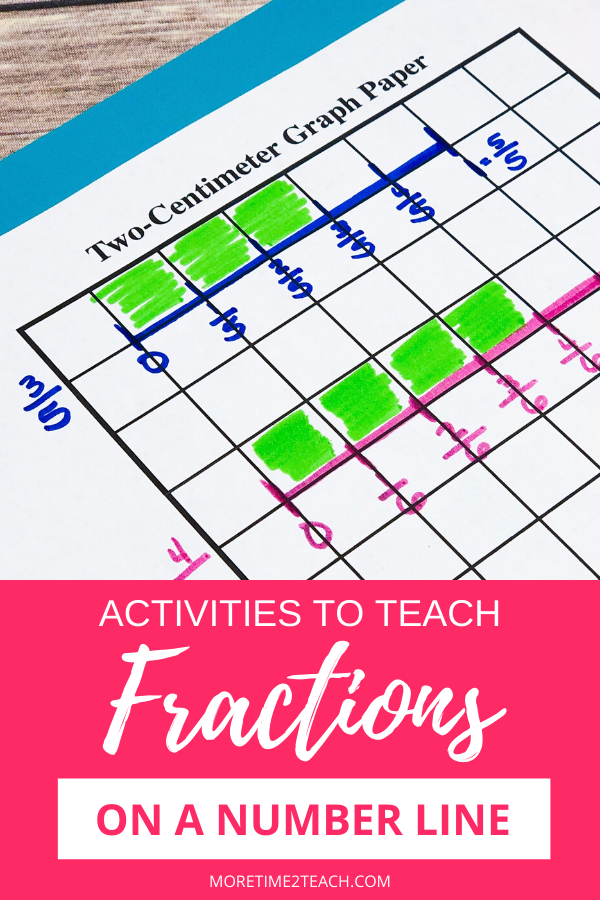




No Comments